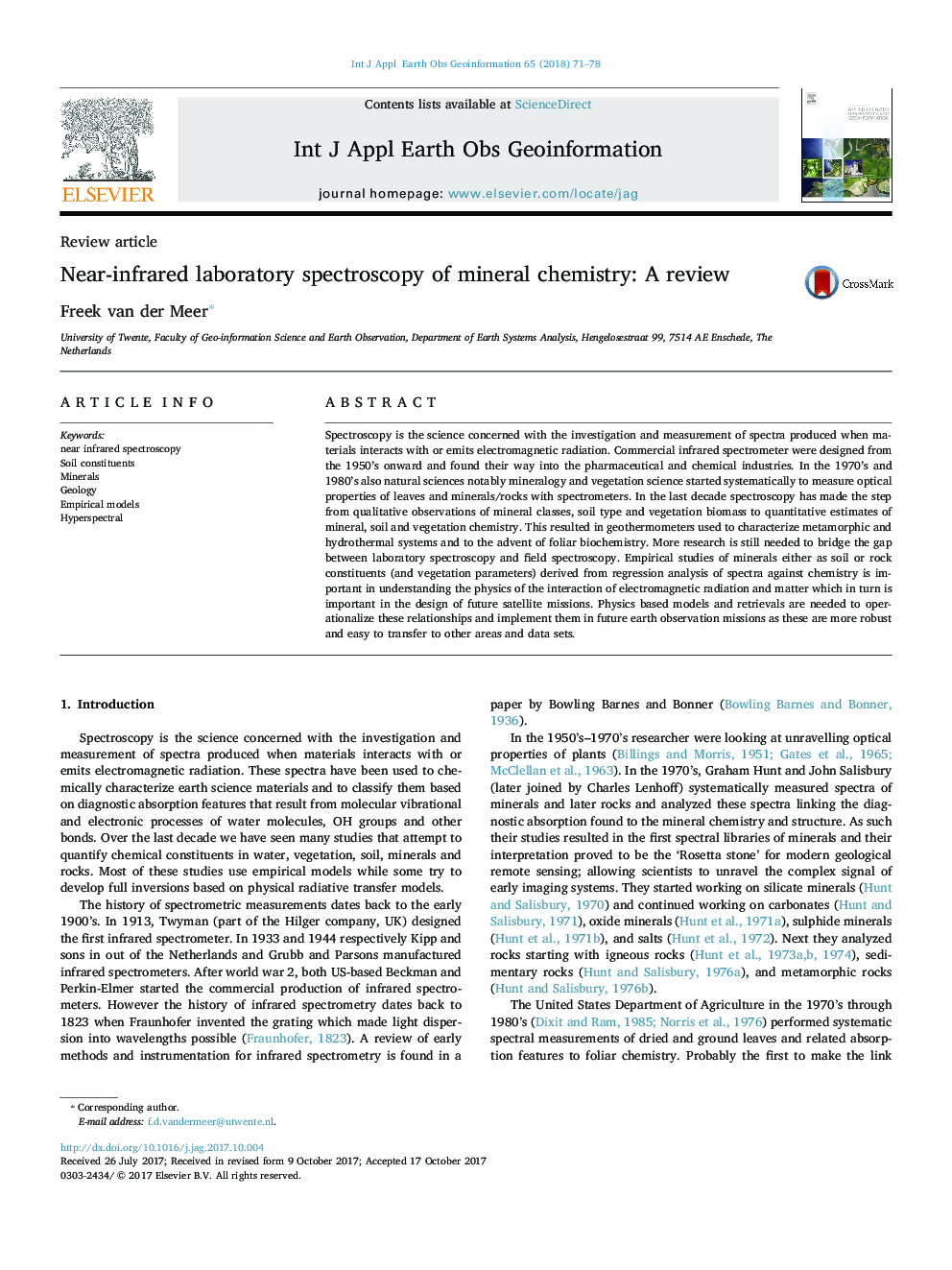| Article ID | Journal | Published Year | Pages | File Type |
|---|---|---|---|---|
| 8868013 | International Journal of Applied Earth Observation and Geoinformation | 2018 | 8 Pages |
Abstract
Spectroscopy is the science concerned with the investigation and measurement of spectra produced when materials interacts with or emits electromagnetic radiation. Commercial infrared spectrometer were designed from the 1950's onward and found their way into the pharmaceutical and chemical industries. In the 1970's and 1980's also natural sciences notably mineralogy and vegetation science started systematically to measure optical properties of leaves and minerals/rocks with spectrometers. In the last decade spectroscopy has made the step from qualitative observations of mineral classes, soil type and vegetation biomass to quantitative estimates of mineral, soil and vegetation chemistry. This resulted in geothermometers used to characterize metamorphic and hydrothermal systems and to the advent of foliar biochemistry. More research is still needed to bridge the gap between laboratory spectroscopy and field spectroscopy. Empirical studies of minerals either as soil or rock constituents (and vegetation parameters) derived from regression analysis of spectra against chemistry is important in understanding the physics of the interaction of electromagnetic radiation and matter which in turn is important in the design of future satellite missions. Physics based models and retrievals are needed to operationalize these relationships and implement them in future earth observation missions as these are more robust and easy to transfer to other areas and data sets.
Related Topics
Physical Sciences and Engineering
Earth and Planetary Sciences
Computers in Earth Sciences
Authors
Freek van der Meer,
